Thanks to our friends at SPARTANAT.com we can bring you this special report. Article originally published in German language on SPARTANAT.com
For many people, learning to jump out of a completely functional aircraft is either a dream to pursue by joining the military – or just remaining an impossible dream. But thanks to the MFTS – Militär- Fallschirmspringer- Truppenschule (Military Parachutist Training School). this dream has become more achievable than ever before. To find out more, SPARTANAT dispatched one of their staff to the idyllic Czech countryside where the MFTS had pitched its tents. And we mean that literally….
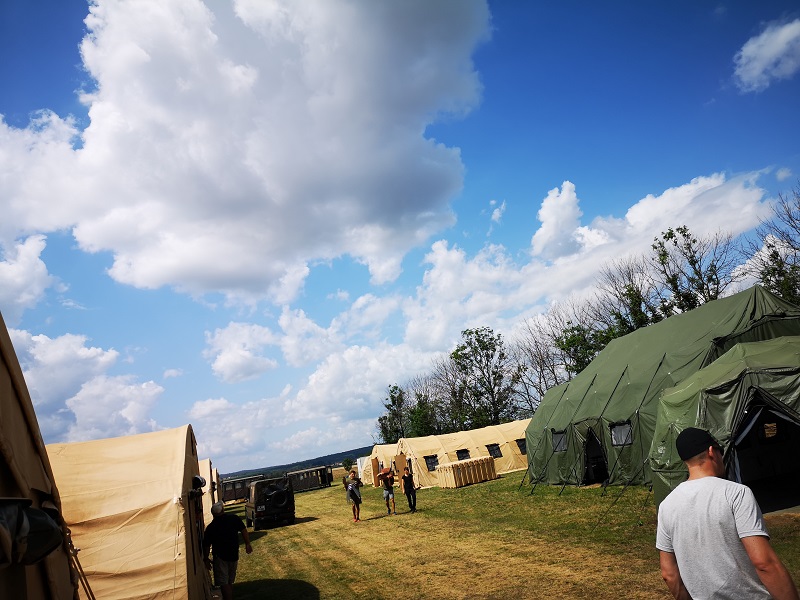
Before you go.
If you want to jump out of a plane, you need to be physically healthy. This requires a certificate from a licensed doctor clearing you for the participation in the course. If you don’t, or can’t get one of those then you don’t get to jump. You will receive the form for the certificate, and a lot more paperwork, after registering for the course by email. You will also receive a recommended packing list that you should definitely stick to if you want to have a smooth experience.
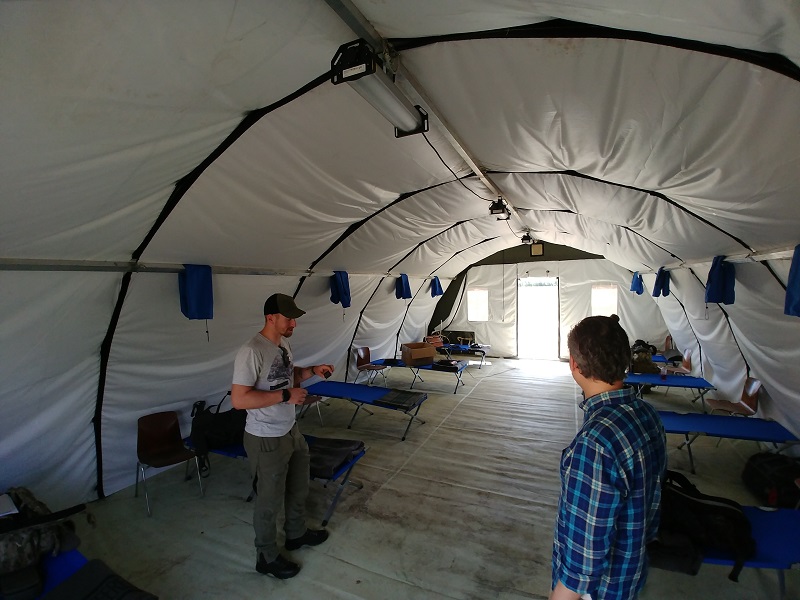
Day 1 – Arrive at MFTS Camp
As we said, they literally pitched their tents… The atmosphere of the green and beige tent city gives you the right feeling that you would expect for a military school, and that’s all part of the experience. After a short lap around the whole area, we settled in for some classroom learning.
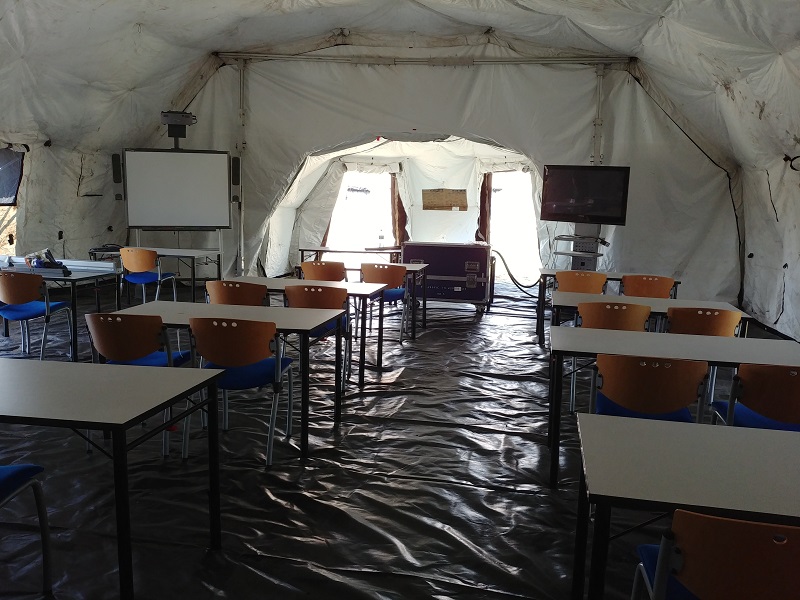
The classroom instruction starts with an introductory training session that explains what it’s like to undertake a real parachute jump, what to look out for, and so on.
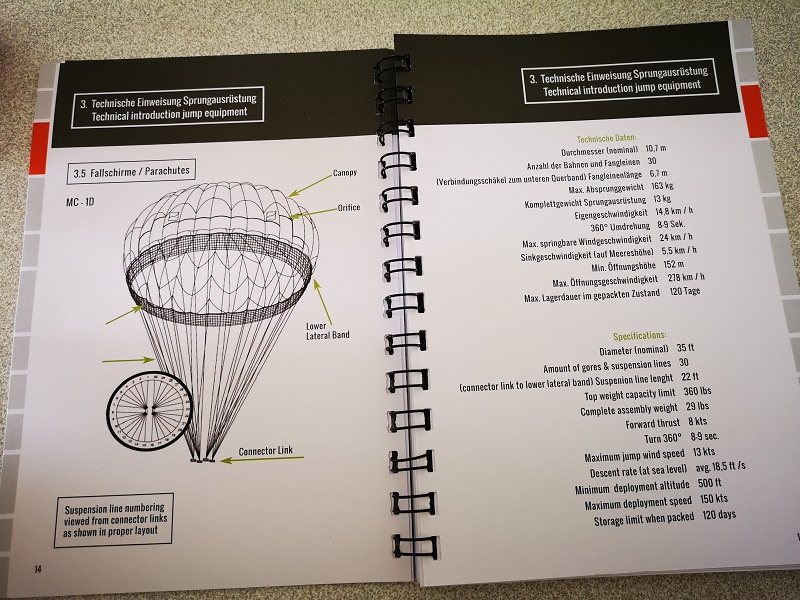
Then the theoretical overview moves into the practical demonstration of parachuting equipment and procedures. This is a very important step, because if you mess up packing your main parachute, it will not open properly, and the jumper will have only 3 to 4 seconds to react before hitting the ground. It only takes about 10 seconds to hit the ground from jump altitude if your parachute doesn’t open. Fortunately, such total malfunctions are virtually unheard of with modern parachutes and safety procedures.
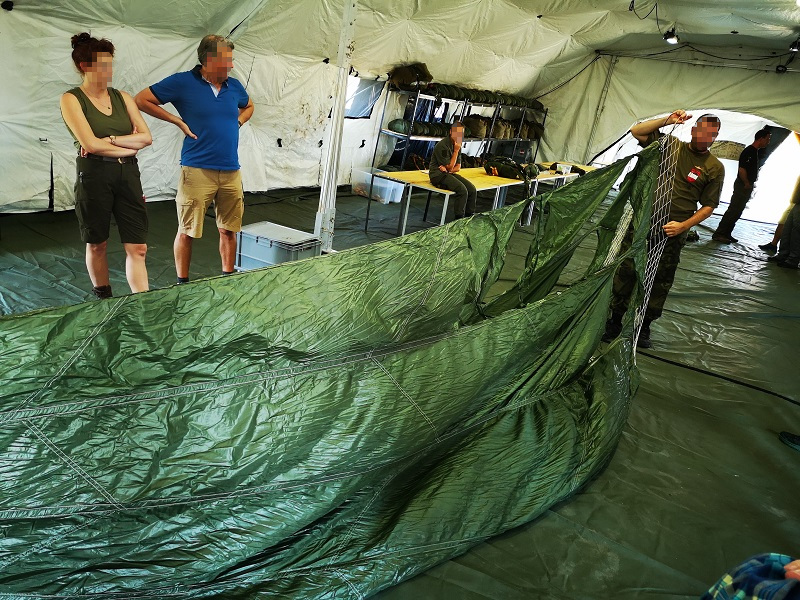
Practice, practice, practice. The highly trained parachute packers at the MFTS do a really great job. You do not need to be afraid that you have to jump with your self-packed parachute, unless you really want to.
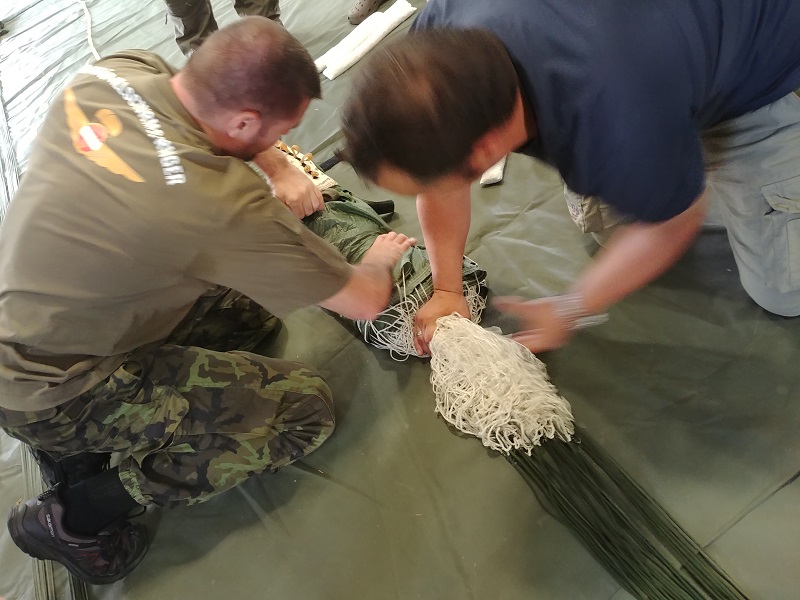
Paracord and Riggerbands in their natural habitat. For most of us a very rare sight. The suspension lines are separated and well-ordered, and the versatile rubber bands keep the lines properly stowed, secured and in shape.
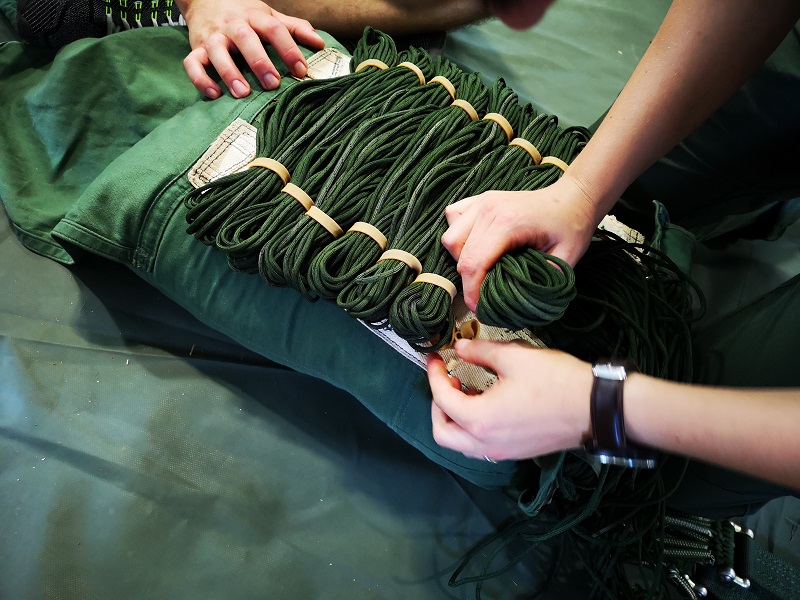
Speaking of keeping things in shape, after an intensive 1st day, a hearty dinner restores the mind and body. After this, it’s off to the cot and into the realm of dreams. But as the sleeping tents accommodate up to 10 people, ear plugs are a must to block out the snorers and fall asleep better…

Day 2 – Getting our Learn on
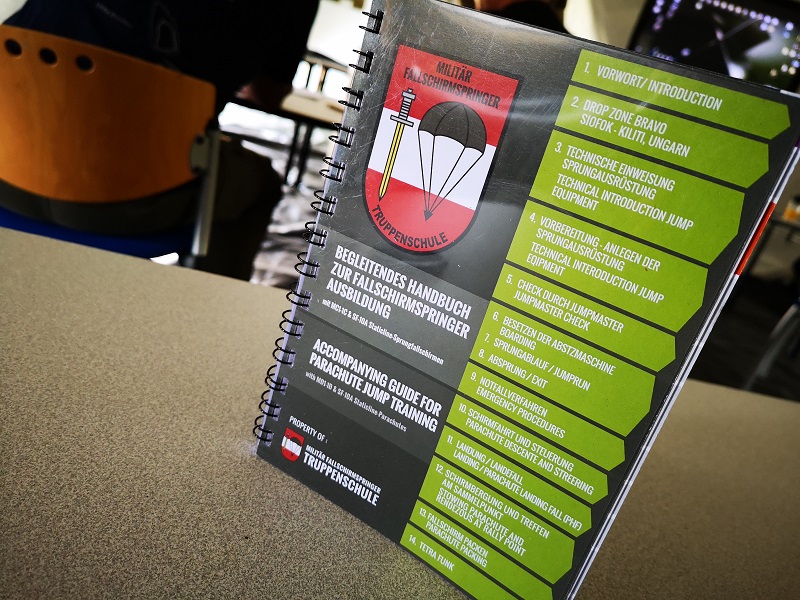
Early in the morning it starts again with classroom time to go over theory and practical demonstrations. The afternoon of Day 3 is when the first jump is scheduled, so we’d better fill our heads with knowledge fast!
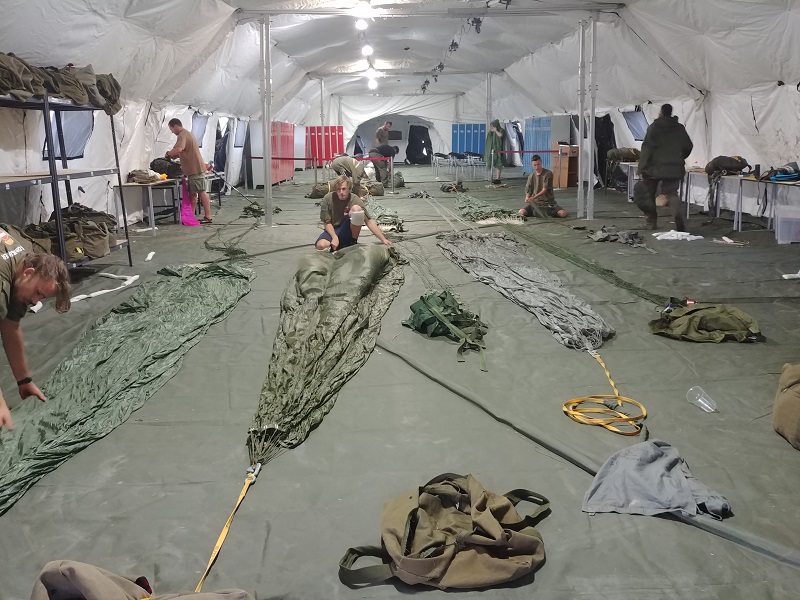
Emergency procedures for how to deal with something goes wrong, are covered extensively. Be it tricky landings, or obstacles, or ‘chute malfunctions. Fortunately, there is always a reserve parachute with you in case things go really wrong.
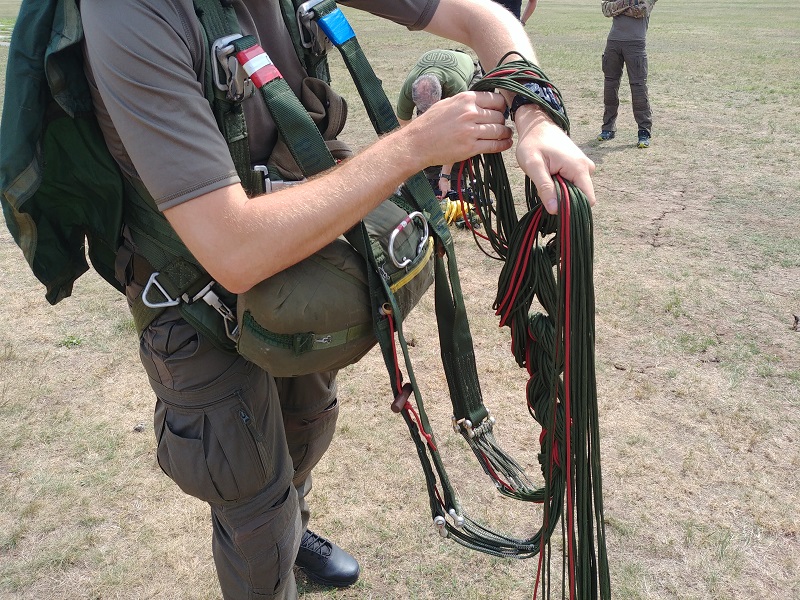
But of course the jump is only one part of the job. There are procedures and actions to learn for once you land, and there is also the need to know the correct way to sort out your parachute for recovery. As well as, what to do if the wind is blowing hard and your ‘chute is dragging you across the DZ. In any case, you wouldn’t be the first parachutist that happened to, promise…
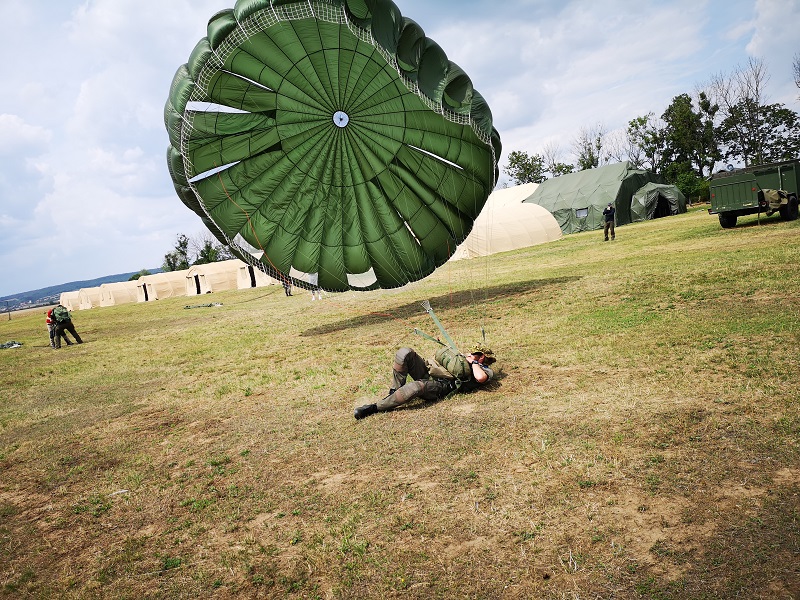
In the early afternoon we start with one of the most important exercises, learning the correct Parachute Landing Fall (PLF). Yes, in jump school they actually teach you how to fall to the ground. After all, you come down at approx. 5 m/s, which corresponds to 18 km/h. About the same as jumping off a picnic table, with equipment. For the first time, the question came to my mind: “What exactly am I doing here?”

After more than one and a half hours of practicing PLFs, and with many bruises from the less successful attempts, we begin to feel a sense of confidence: we can do this!
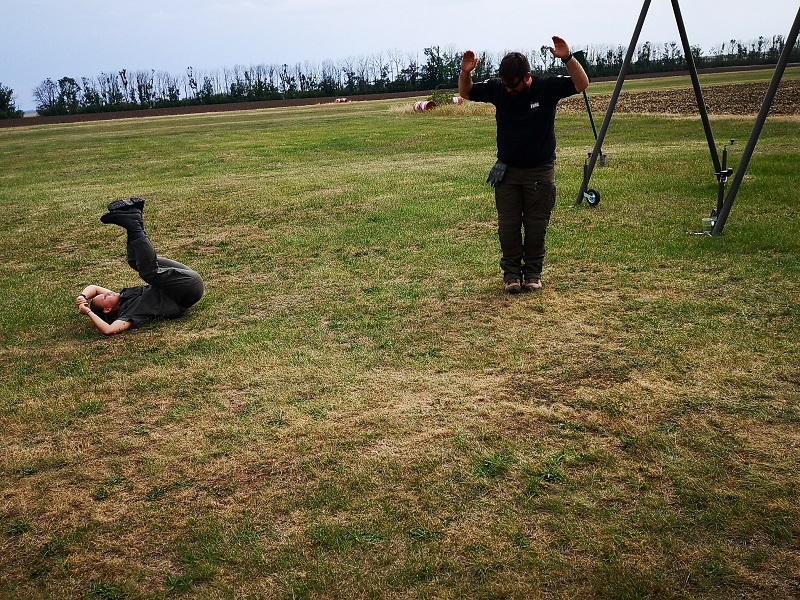
After further classroom time, and then an excellent supper (hopefully not our last), it’s time for bed.

Meanwhile, the riggers are working tirelessly in the packing hall getting all of our ‘chutes ready for the next day. Each ‘chute is carefully packed according to strict procedures, and expertly checked several times throughout the process, before being given a final inspection and signed off as ready to jump. To properly pack each ‘chute takes a trained rigger approx. 30 to 40 minutes.
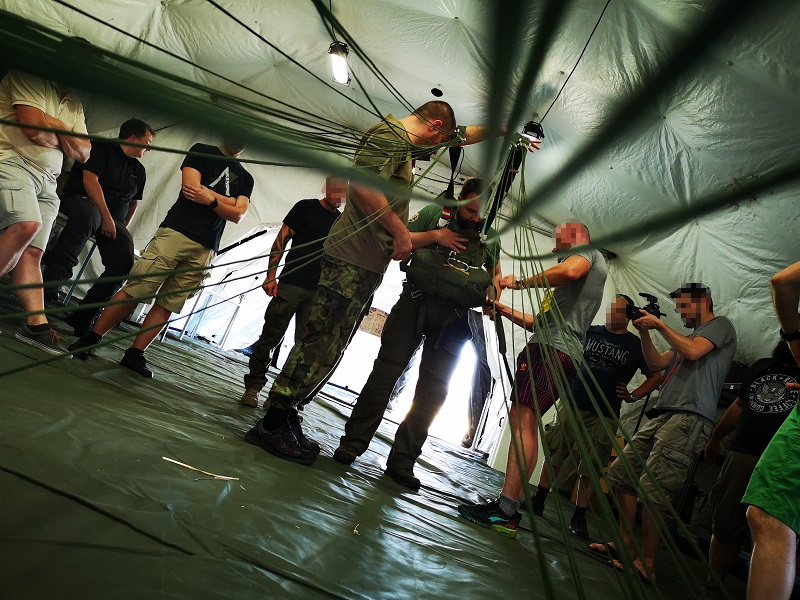
Day 3 – Ready for anything
The decisive day has arrived when it’s time to put theory into practice – our first jumps are planned for the afternoon. So to get our minds focussed and our bodies limbered up, we start this beautiful day at 0600 with some classic PT.
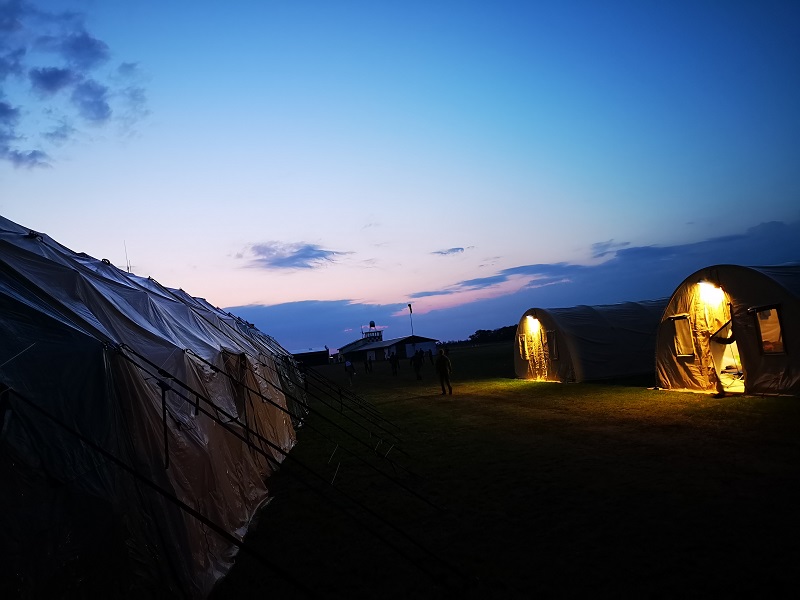
After breakfast, it’s back to practice, practice, practice – including time in the suspended harness simulator (aka, “suspended agony”) to rehearse and internalize the rules of the air. This is critical knowledge, as no one wants to get entangled with another jumper, or to drift too far from the drop zone. The morning also includes some more time discussing and practicing the procedures for inside the aircraft.
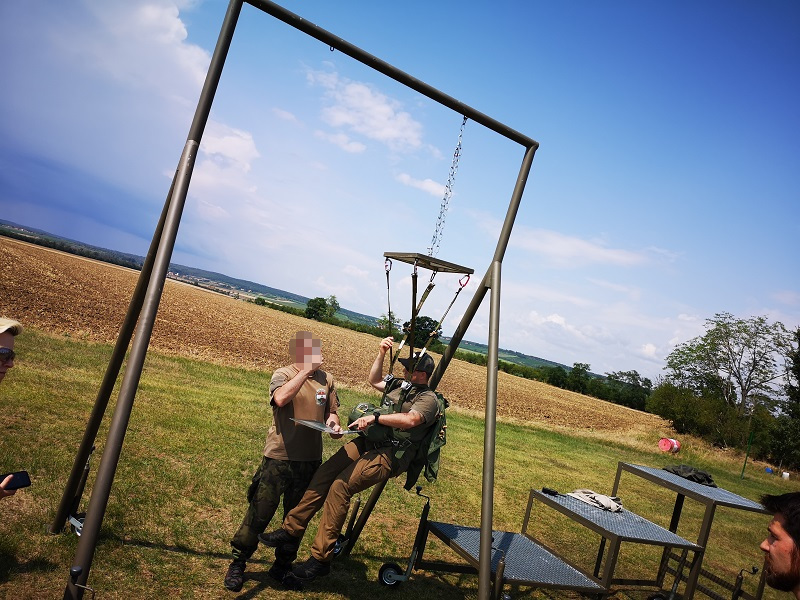
After lunch, it’s more PLF training – while massive storm clouds build on the horizon. Tension increases as the weather worsens, and then the final decision is made – no jumping today – as thunderstorms break over the camp. So its back into the tents for more classroom training to go over the materials again, and to observe the riggers doing their work.
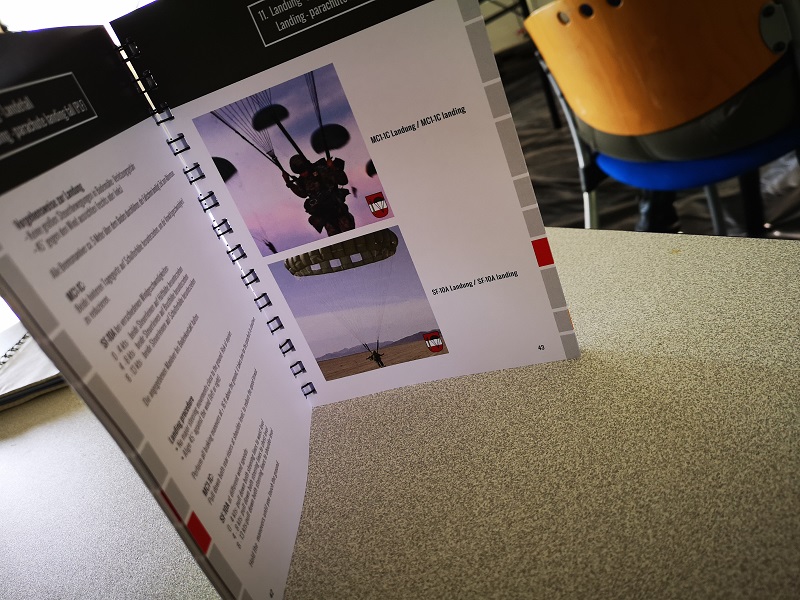
At around 8:30 pm the torrential rain finally stops and we are rewarded with a beautiful sunset. With great nervousness about the next day, we go to bed. We have lost time to make up, so the jumps in the morning are planned for 0600. So we’ll be getting up very early.
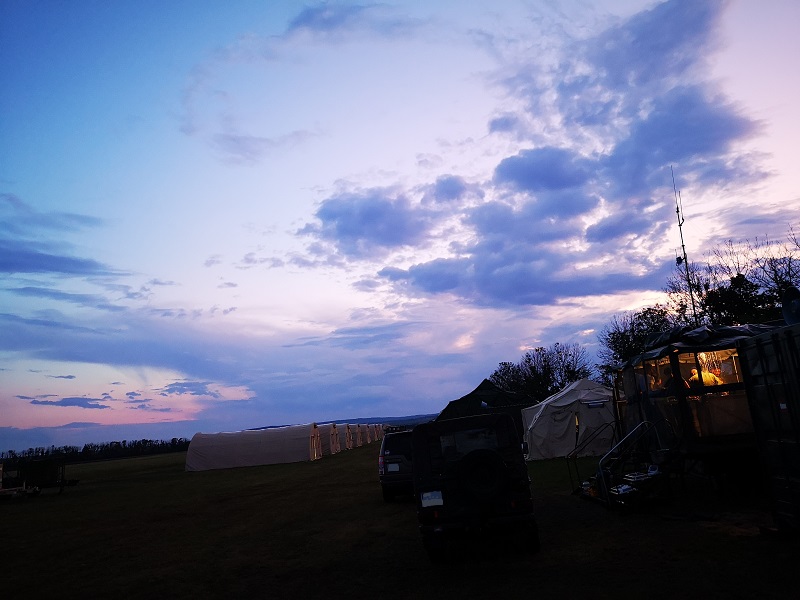
Day 4 – We jump
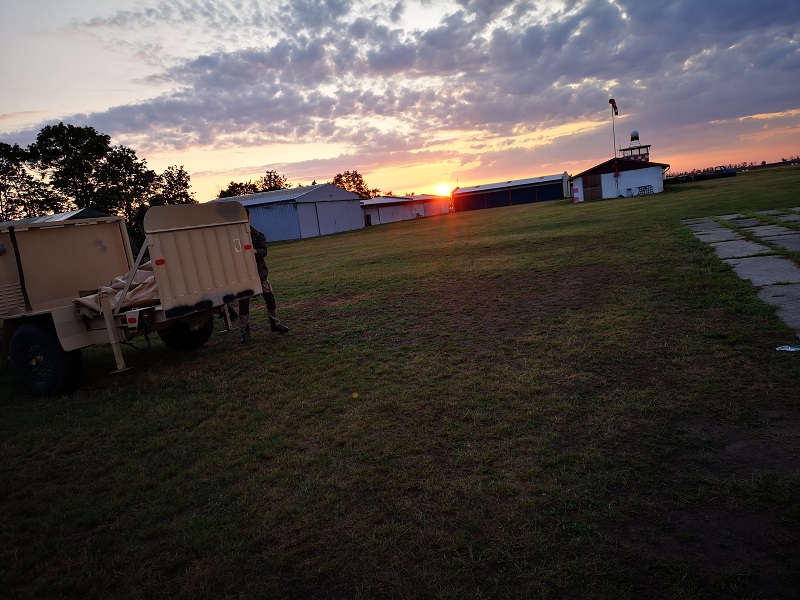
The early bird catches the worm – or so the saying goes. So we get up at 0430 and do PT at 0500. Then it’s a quick wash-up, get dressed, and get ready for things to get serious. Very serious.
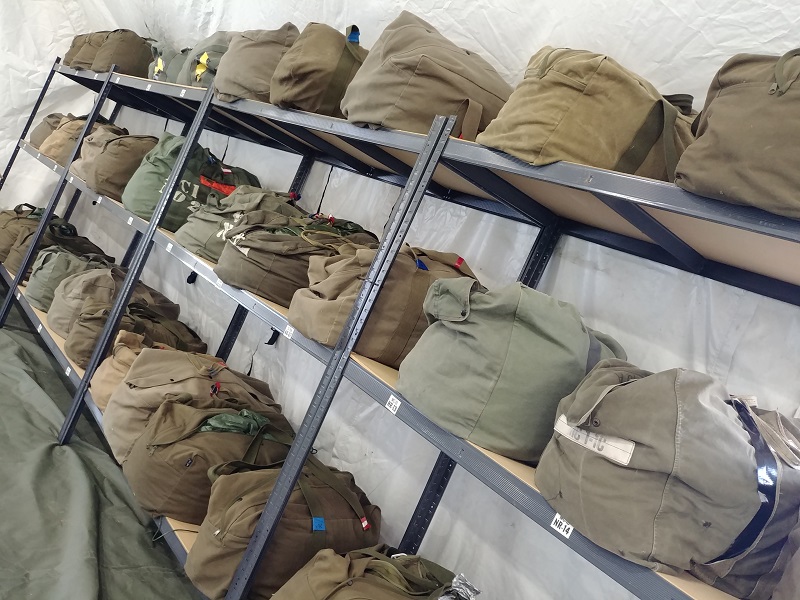
It starts in the packing hall with the parachutes. Everything is scrupulously checked, and the jumping order is established. N ow the adrenaline is pumping and everyone starts to feel excited and motivated to get up in the air – as well as a bit nervous too of course.
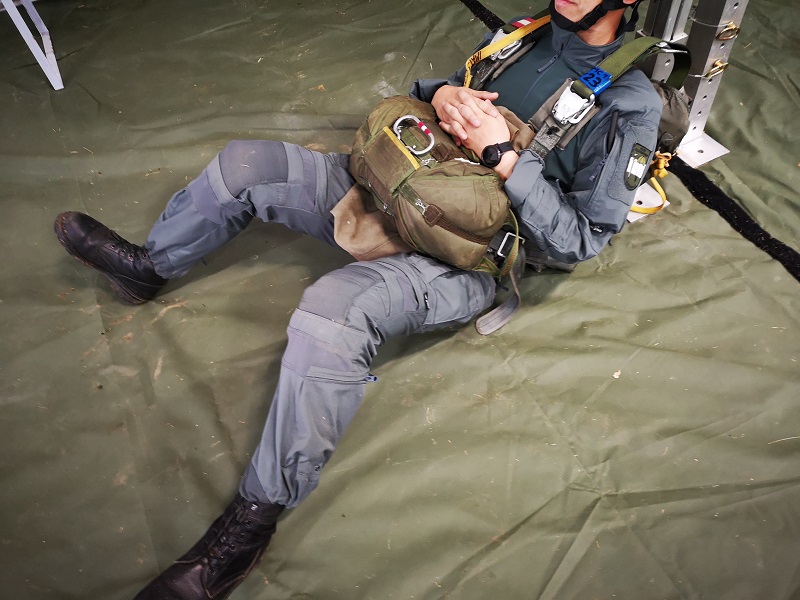
0600 – where is the plane? We do what soldiers do best, get all keyed up, and then hurry up and wait… After two hours, the aircraft finally shows up – it’s a classic Pilatus Porter PC-6.
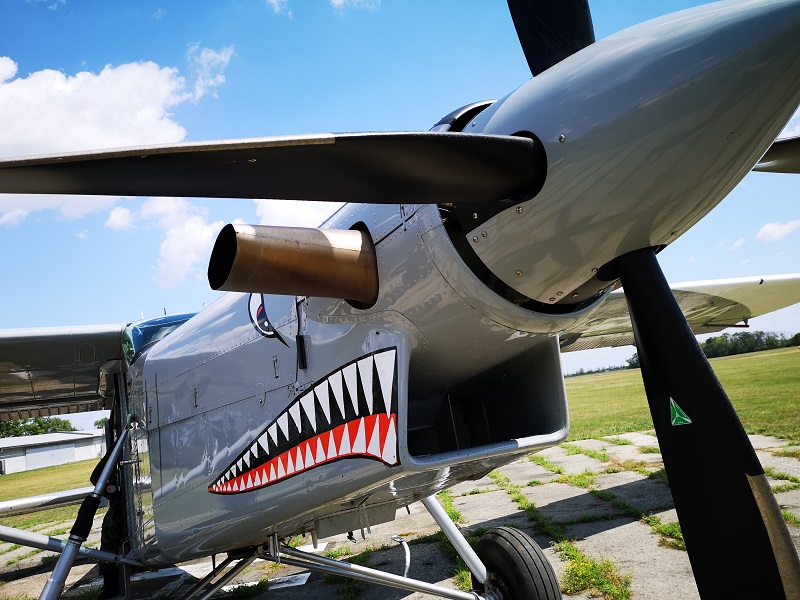
Now the pace picks up quickly. Get ready, check everything again, stand up, and the first five jumpers board the plane. We are in the third jump group and get to watch the whole spectacle of the first two groups jumping. Less than two minutes after the aircraft takes off, the Jumpmaster confirms the wind direction with a roll of paper tossed from the aircraft.

After about five minutes, the first jumper drops exits the plane in the controlled manner that we were taught. The parachute makes a picture-perfect opening and the jumper descends safely to the ground.
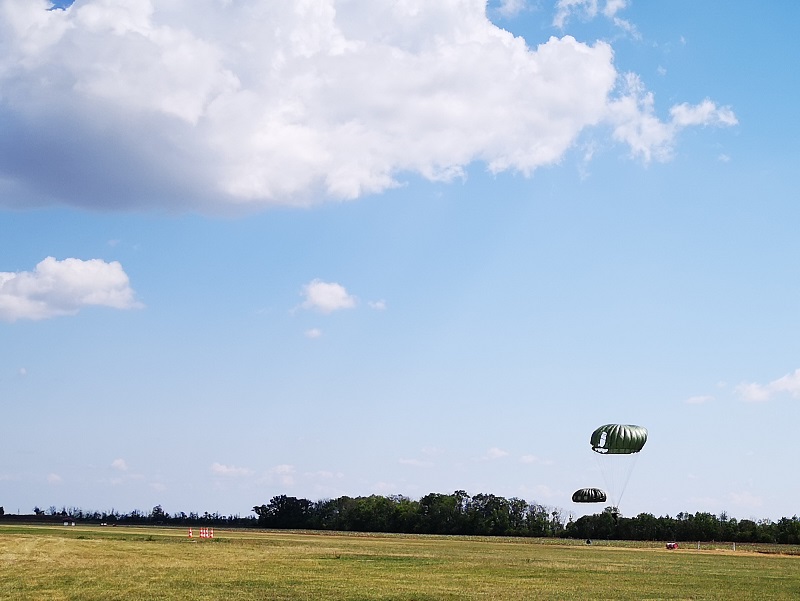
Shortly thereafter, the other jumpers follow. With them also everything proceeds just like in the textbook, and so it went all day long. Everything goes smoothly and nobody needed to use their reserve ‘chute. Good packing pays off…
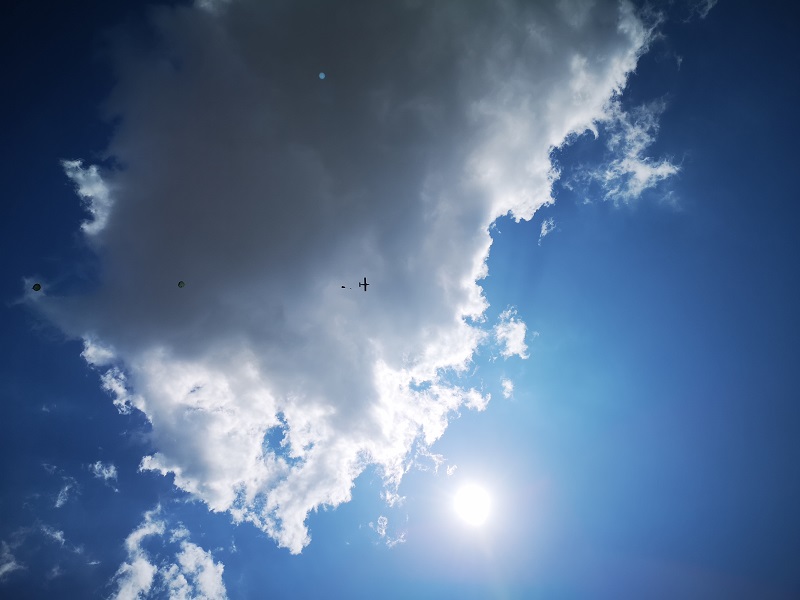
Now it’s our turn.
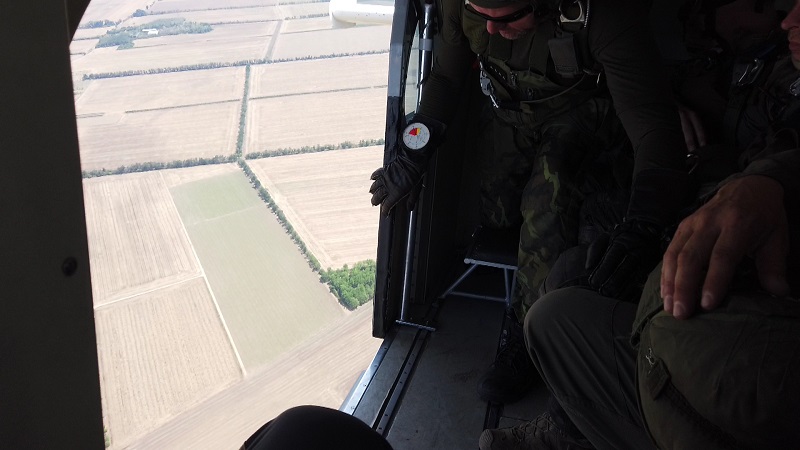
The blood fills with adrenalin, the body tenses, and the head is swarming with thoughts about what, when, and how. And even the worst-case “What if” scenario. The plane climbs through the sky, the Jumpmaster opens the door at 600 metres altitude, the pilot holds the plane steady on course at the required speed, the first Jumper takes his position in the door, and then we hear the command of “GO!”
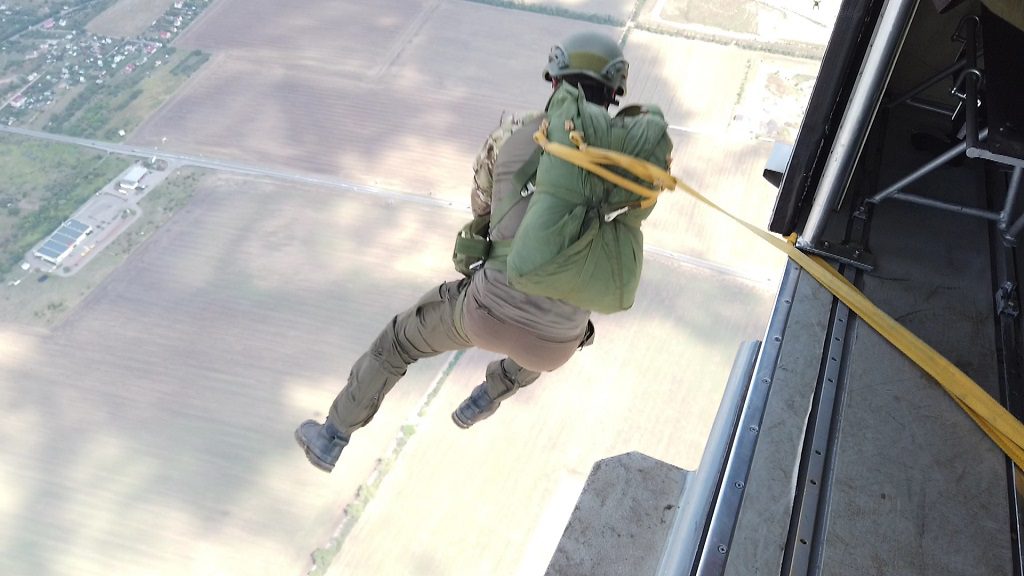
The first Jumper leaves the belly of the machine, and the second moves immediately into place. The procedure repeats until all five of us are outside the aircraft. And so, just like that, the theoretical has suddenly become hyper-real and we are actually doing all the things we’ve been learning and rehearsing for the past days.
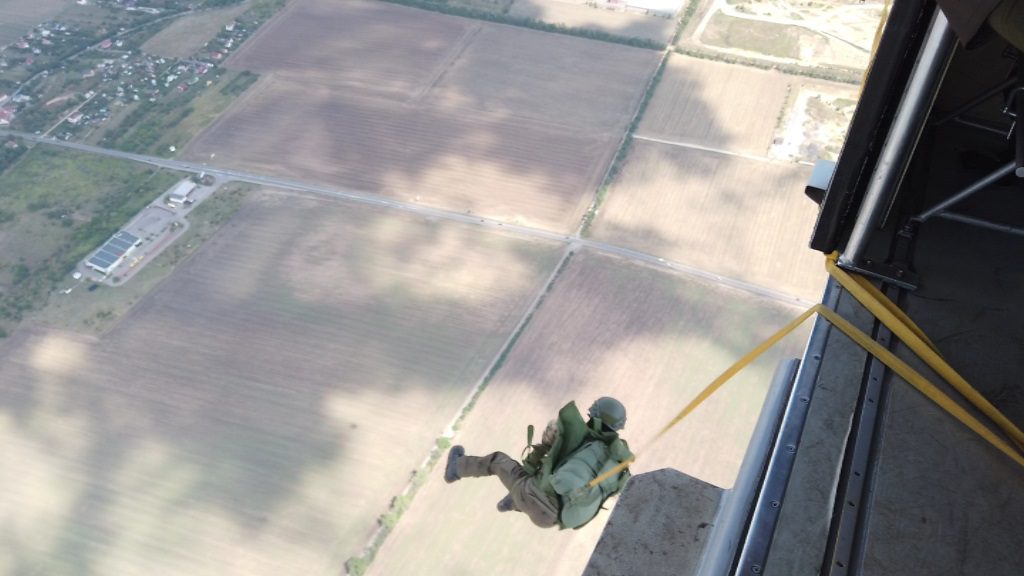
For the first fraction of a second our consciousness struggles to comprehend what’s happening. Our bodies and minds have never done anything like this before, but very quickly our training kicks in and the rational side of the brain takes over again. We start counting aloud: “one thousand, two thousand, three thousand, four thousand, check canopy!”
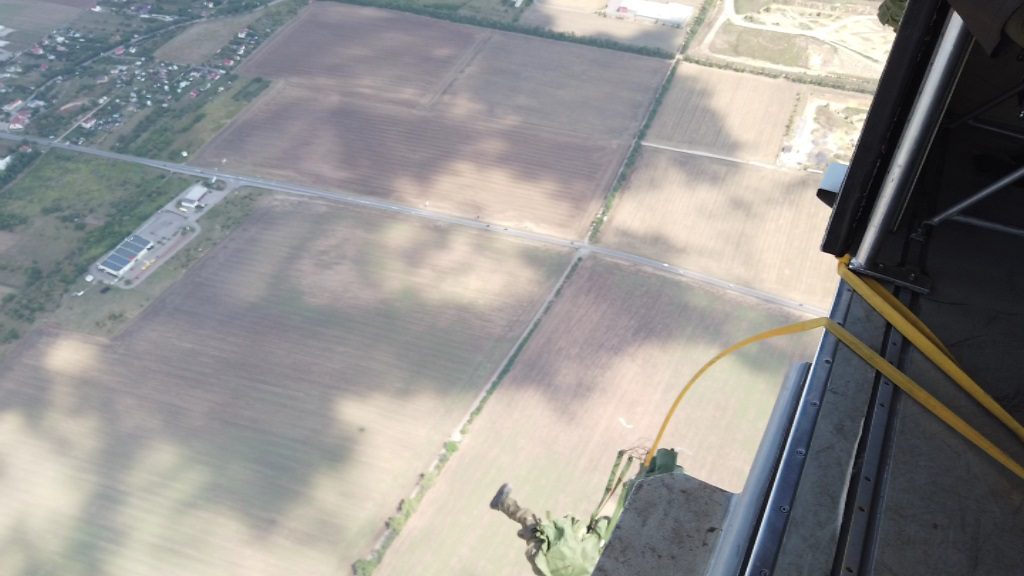
Looking up, the ‘chute looks good – its fully opened and perfectly round. The lines are a little bit twisted, but after a jerk on the straps they pop out and we are all hanging under our canopies – again, everything went perfectly by the book.
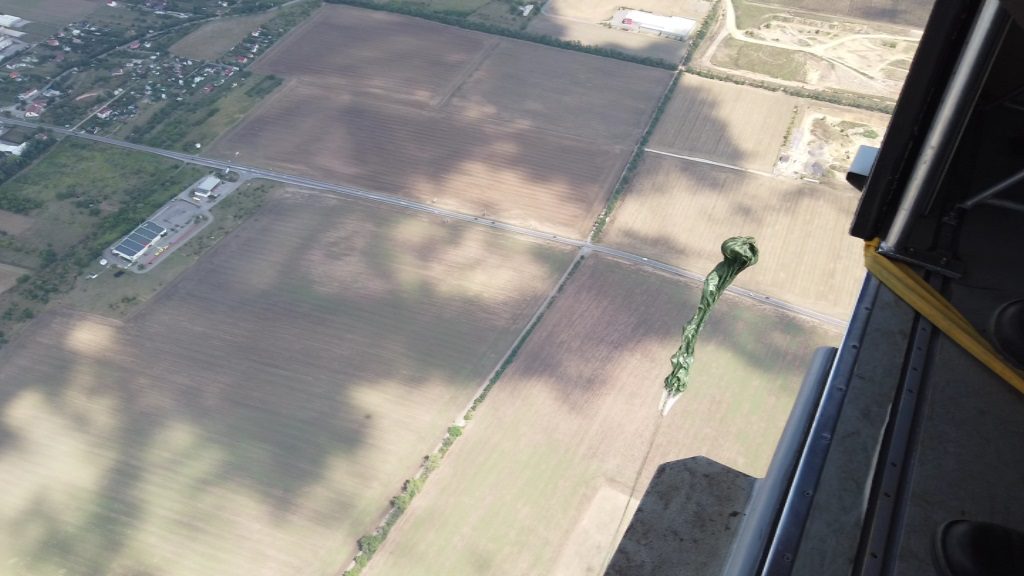
I look around again to check on my comrades, everything is fine with them too. Still looking around and keeping a lookout to avoid drifting too close to any of my fellow Jumpers, I also take a look down. Wow, how small everything appears! The tent city and the airstrip is in full view, the surrounding countryside looks picturesque in the morning light. Even the steaming cooling towers of a far off nuclear power plant look peaceful and photogenic.
Getting closer to the ground now and time to take some actions as I control the parachute in preparation for landing. After some steering adjustments, the ground is now very close. We can not estimate the height and I don’t have time to count how many seconds to landing. I put my feet together, knees slightly bent and hold well to the straps. Time seems to stand still for a moment in anticipation, and then I hit the ground! Again the training and muscle memory takes over, and I execute a PLF as if completely automated.
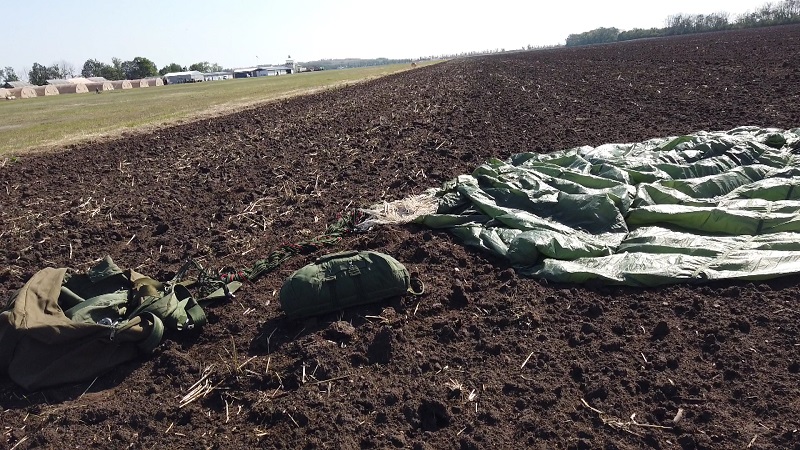
Luckily the ground is very soft after the heavy rains the day before, and the grassy field beneath us provides a nice gentle landing. I do a short self-check, does anything hurt anywhere? No. Very good. I get up and immediately begin to collapse, gather up and stow my parachute and harness, just as we were shown and practiced. I look around the drop zone, all my comrades have also returned safely to Mother Earth.
With our parachutes ‘field packed’ we make our way back to the tents. We are immediately issued a new parachute, and the same procedure and heavenly spectacle is repeated again. All-in-all, we jump three more times on this beautiful day, and apart from one jumper who had a bit of bad luck landing and slightly compressed his foot, all others completed the course without injury or mishap.
In the afternoon we have a short graduation ceremony during which everyone receives their MFTS certificate, and then it’s time to pack up and travel back to Vienna.
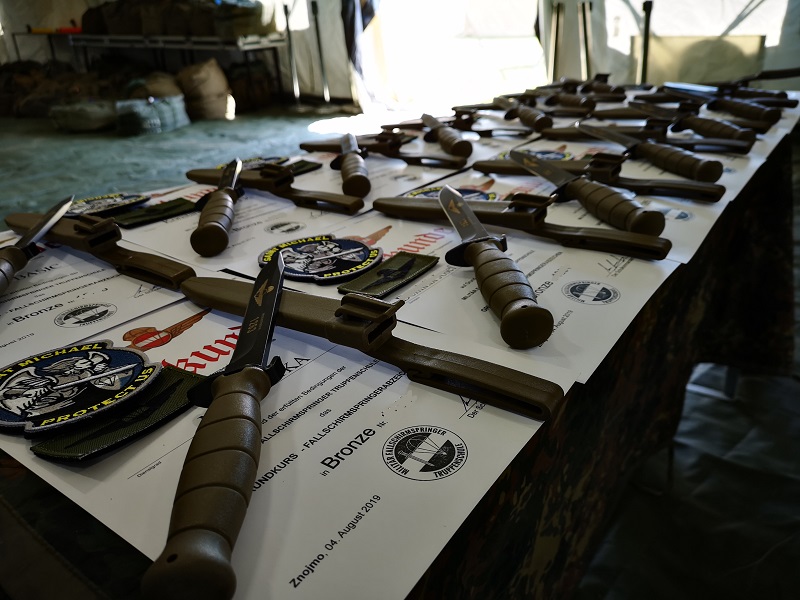
CONCLUSION:
If you want to learn military-style parachuting with a static line deployed round canopy, then MFTS is definitely the right place. The instructors are experienced, capable professionals who convey their knowledge very well. All of the equipment used for jumping is in pristine condition, and as safe as it can be. Even the food served on-site during the course is excellent. With the MFTS, the highest value is placed on the safety and health of all participants, and one certainly feels well cared for.
And that’s a good thing: after all, jumping out of a perfectly good airplane in flight is nerve-wracking enough, you don’t need to also have to worry about your equipment or your next meal. Luckily with MFTS you get a full program without the worries.
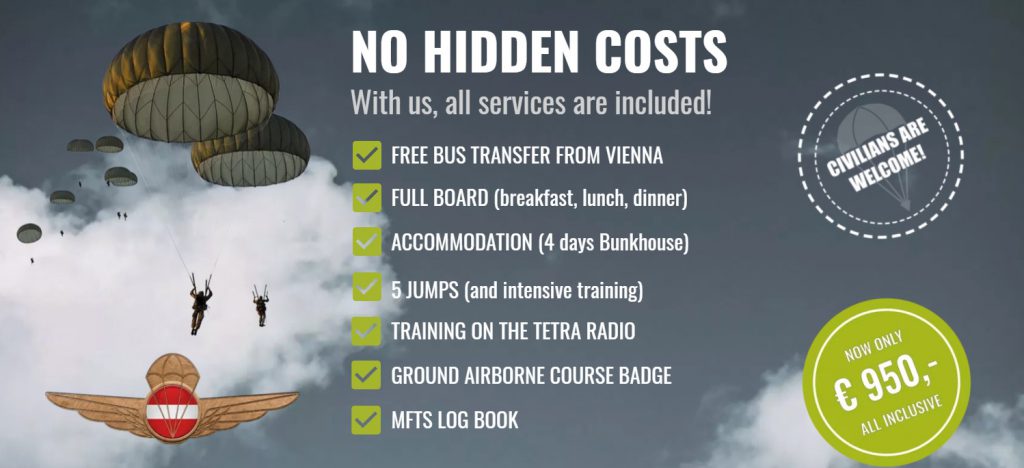
To learn more about the MFTS, go to: mfts.army/en/
You can also watch the short video made by our friends from SPARTANAT: